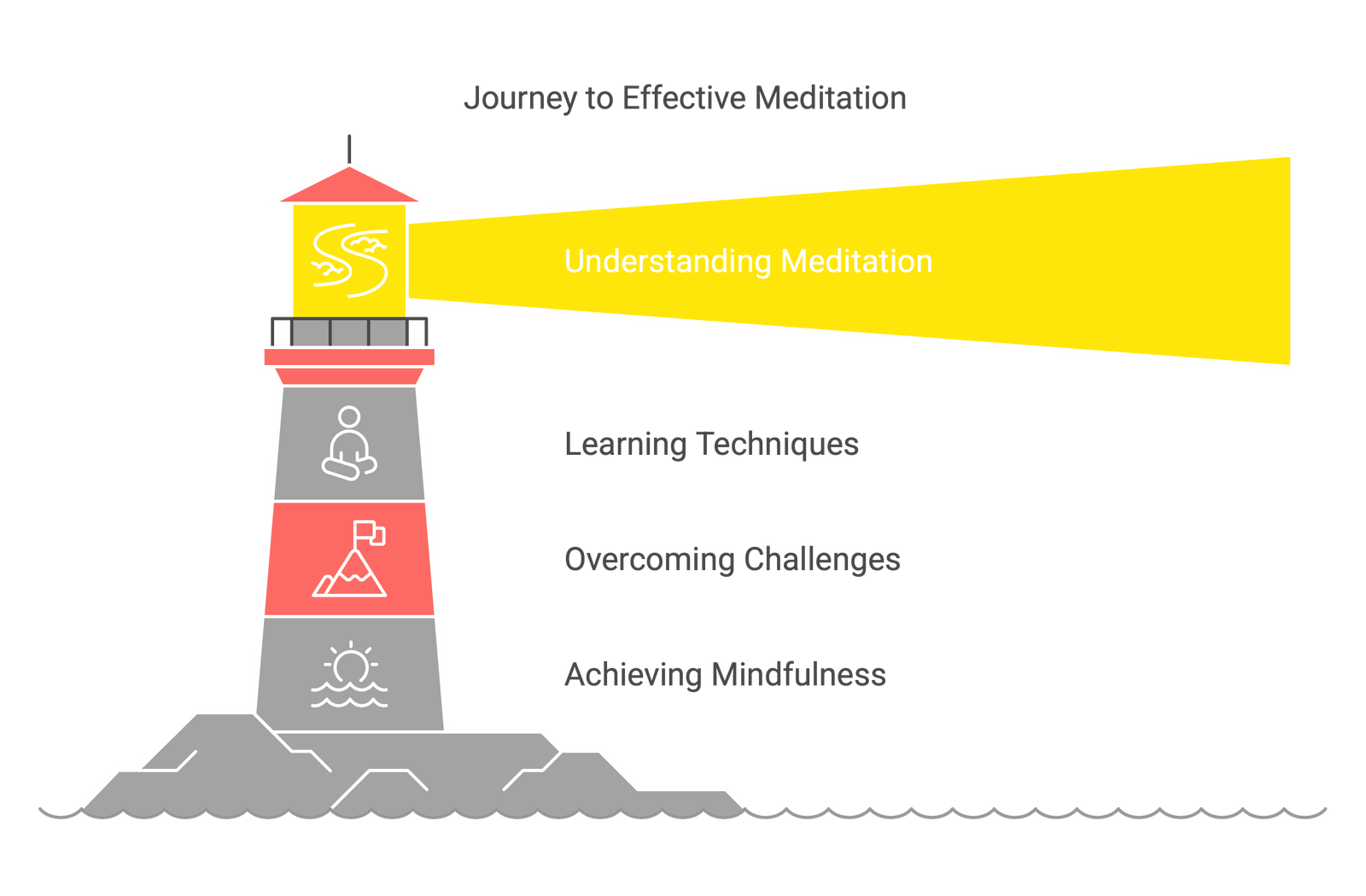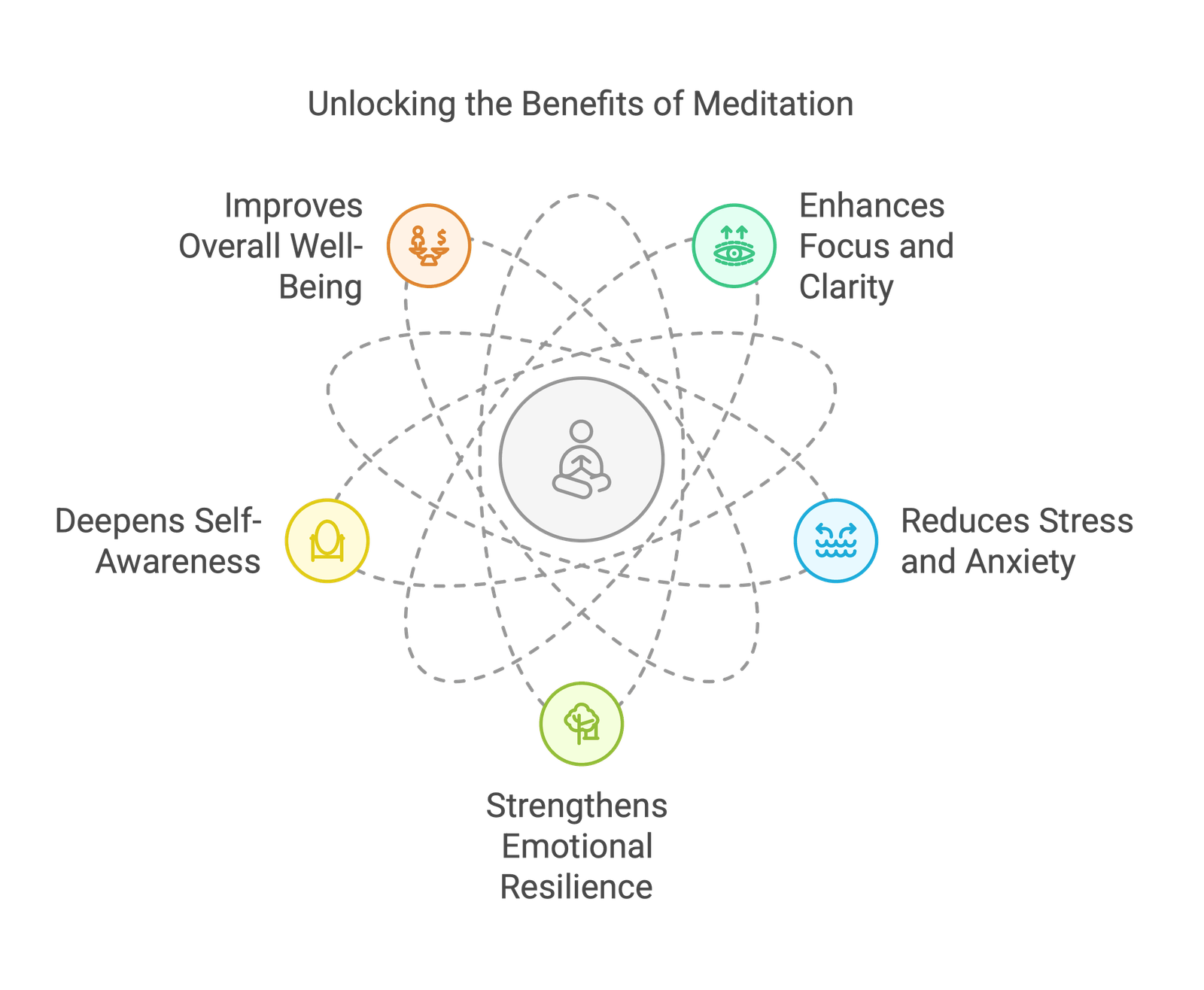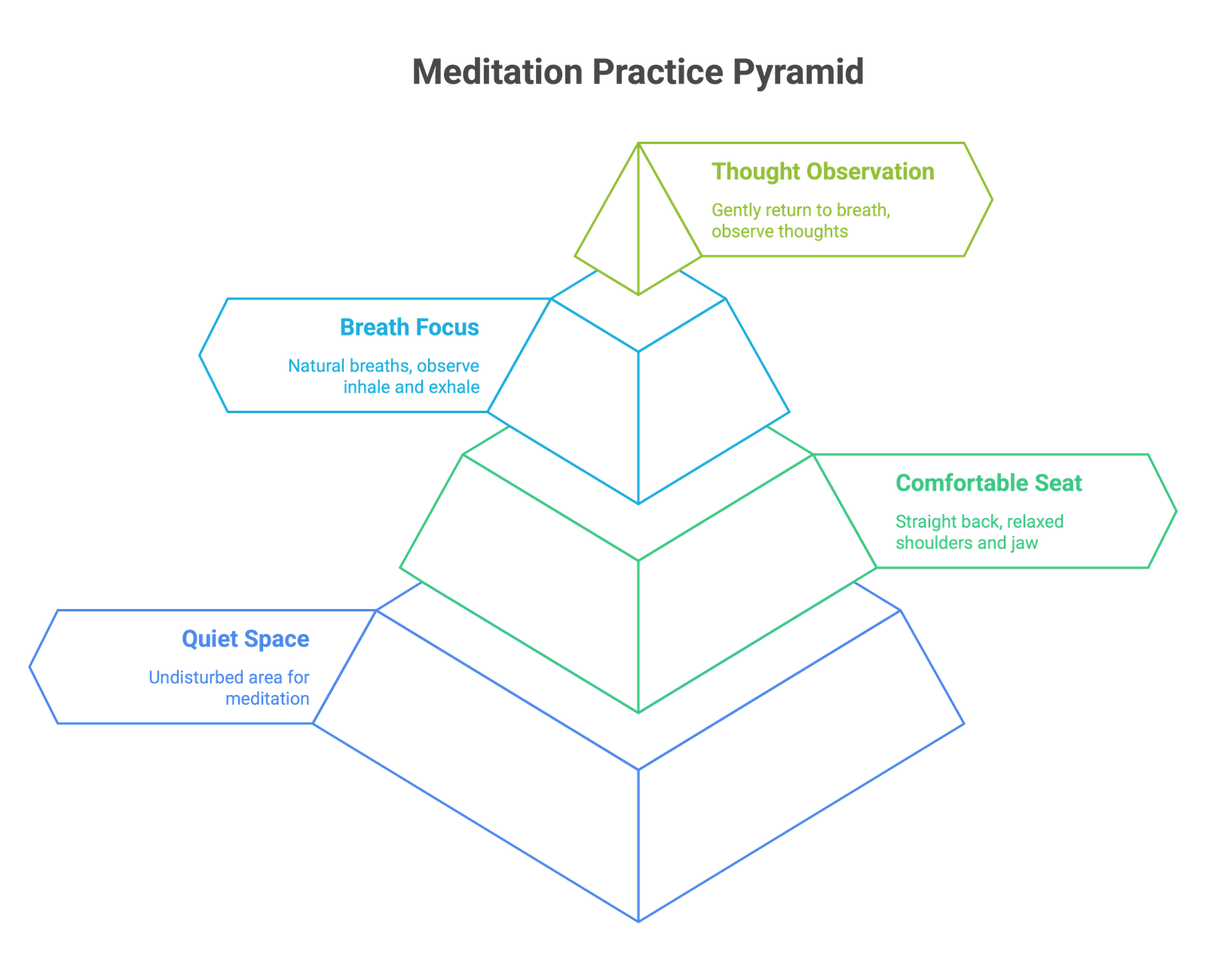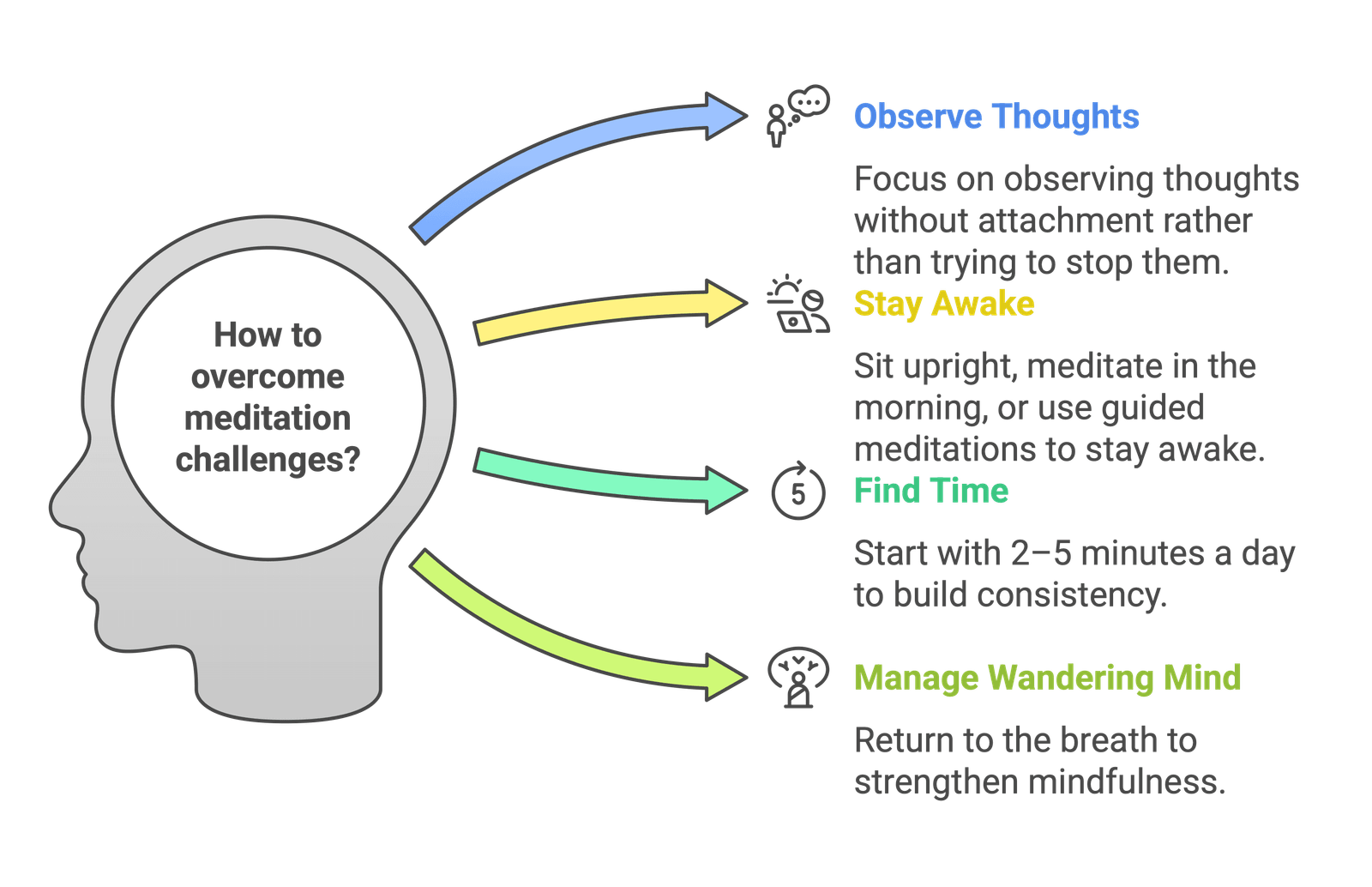How to Meditate? A Complete Guide for Beginners
Introduction
◇ Meditation is not about controlling the mind; it is about observing it. For beginners, the idea of sitting in silence can seem daunting, but meditation is a simple and natural practice—one that reconnects you with the present moment. This guide will provide you with everything you need to start meditating, from fundamental techniques to overcoming common challenges.

1. What is Meditation?
∅ Meditation is the practice of turning attention inward, cultivating awareness, and developing a deeper understanding of oneself. It is found across many traditions, but at its core, meditation is the art of being fully present.
Core Benefits of Meditation
✔ Enhances focus and clarity
✔ Reduces stress and anxiety
✔ Strengthens emotional resilience
✔ Deepens self-awareness
✔ Improves overall well-being

2. How to Get Started with Meditation
Starting meditation is simple, but consistency is key. Follow these foundational steps to build your practice.

Step 1: Find a Quiet Space
◇ Choose a space where you won’t be disturbed. It can be a dedicated meditation corner or a simple quiet room.
Step 2: Sit Comfortably
✔ Sit with your back straight (on a cushion, chair, or floor)
✔ Keep your hands resting on your knees or in your lap
✔ Relax your shoulders and jaw
Step 3: Focus on Your Breath
✔ Close your eyes or soften your gaze
✔ Take natural, relaxed breaths
✔ Observe the inhale and exhale without trying to control it
Step 4: Notice Thoughts Without Judgment
✔ Thoughts will arise—this is normal
✔ Gently return to your breath whenever your mind wanders
✔ There is no need to fight thoughts; just observe them and let them pass
Step 5: Set a Timer
✔ Start with 5–10 minutes per session
✔ Gradually increase to 20–30 minutes as you become comfortable
✔ Use a meditation timer with a soft chime to avoid distraction
3. Common Beginner Mistakes and How to Overcome Them
Even experienced meditators face obstacles. Here are some of the most common challenges and solutions:

| Mistake | Solution |
|---|---|
| “I can’t stop my thoughts!” | Meditation is not about stopping thoughts but observing them without attachment. |
| “I keep falling asleep.” | Try sitting upright, meditating in the morning, or using a guided meditation. |
| “I don’t have time to meditate.” | Start with just 2–5 minutes a day—consistency is more important than duration. |
| “I get frustrated when my mind wanders.” | This is completely normal! Every time you notice and return to the breath, you are strengthening mindfulness. |

4. Scientific Benefits of Meditation (Backed by Research)
✔ Reduces stress: Lowers cortisol levels by 14–25%
✔ Enhances focus: Improves sustained attention by 23% after 8 weeks
✔ Changes brain structure: Increases gray matter in the prefrontal cortex
✔ Reduces anxiety: Decreases symptoms by 31% in generalized anxiety disorder patients
✔ Improves emotional regulation: Strengthens connectivity in the default mode network
5. Final Thoughts: Bringing Meditation into Daily Life
☰ Meditation is not just a practice, but a way of being. Even outside of formal sessions, you can cultivate mindfulness in everyday life:
✔ Take 3 deep breaths before responding to stress
✔ Walk slowly and feel each step
✔ Eat without distractions, savoring every bite
✔ Pause and listen fully when someone speaks
You don’t need to be perfect. Just begin. Every moment is an opportunity to return to yourself.
Next Steps
✅ Choose a technique that resonates with you
✅ Set a short, consistent meditation schedule
✅ Be patient—growth happens over time
↺ Start today. Your mind and heart will thank you. 🌿
References
- Gotink et al. (2016) – 8-week MBSR induces brain changes
- Pascoe et al. (2017) – Meditation lowers cortisol, blood pressure
- Basso et al. (2019) – 13-min meditation improves memory & mood
- Goyal et al. (2014) – Meta-analysis on meditation for anxiety
- Chiesa et al. (2010) – MBSR improves attention & emotional regulation



